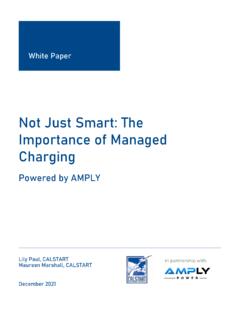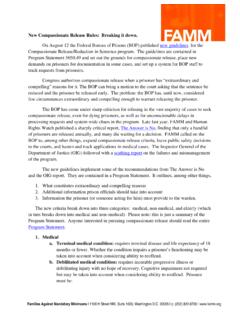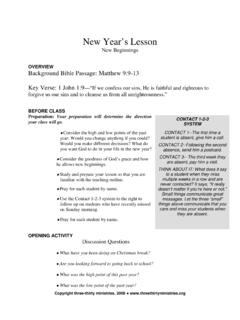Transcription of IN ON ZERO-EMISSION TRUCKS
1 IN. ON ZERO-EMISSION . TRUCKS . THE ADVANCED TECHNOLOGY TRUCK INDEX: A ZET INVENTORY REPORT. January 2022. A CALSTART Report By: Baha M. Al-Alawi, Owen MacDonnell, Ross McLane, and Kevin Walkowicz Acknowledgments This report was funded by the California Air Resources Board (CARB) Hybrid and ZERO-EMISSION Truck and Bus Voucher Incentive Project (HVIP). The authors would like to thank key CALSTART staff, including Emily Varnell, Geoffrey Cook, Jimmy O'Dea, Ralph Troute, Tarah Campi, Niki Okuk, Kevin Leong, and Jessie Lund for their critical review of and additions to this report. This document is based on information gathered as of December 2021. Any errors are the authors' own. No part of this document may be reproduced or transmitted in any form or by any means, electronic, mechanical, photocopying, recording, or otherwise, without prior written permission by CALSTART. Requests for permission or further information should be addressed to CALSTART, 48 S.
2 Chester Ave, Pasadena, CA 91106 or All rights reserved. CALSTART. Copyright 2022 CALSTART. CALSTART | Zeroing in on ZERO-EMISSION TRUCKS : January 2022 ii Table of Contents Acknowledgments .. ii List of Acronyms .. iv Figures and Tables .. vi Executive Summary .. 1. I. Introduction .. 4. ZERO-EMISSION Truck (ZET) Demand .. 4. Definition and Segmentation of ZETs .. 6. II. ZET Market Update .. 8. ZET Model Availability .. 8. ZET Deployments by Application .. 9. ZET Deployments by State .. 12. ZET Deployments by Manufacturer .. 15. ZET Customers ..17. III. Future Growth and Technology .. 18. Upcoming Demonstrations and Pilots .. 18. Pending Orders .. 19. Policy-Driven New Technologies and Business Models Driving ZET Market .. 21. References .. 23. Appendix A: Data Sources .. 26. Appendix B: ZET Incentive Programs .. 27. Appendix C: MOU State ZET Market Statistics .. 29. Appendix D: Breakdown of ZET Incremental Cost, Mileage, and Available Battery Ranges.
3 30. CALSTART | Zeroing in on ZERO-EMISSION TRUCKS : January 2022 iii List of Acronyms ACT Advanced Clean TRUCKS APCF Air Pollution Control Fund AQIP Air Quality Improvement Program AQMD Air Quality Management District BEV Battery-Electric Vehicle CARB California Air Resources Board CaaS Charging-as-a-Service CEC California Energy Commission CMAQ Congestion Mitigation and Air Quality CO2 Carbon Dioxide CORE Clean Off-Road Equipment DC Direct Current DERA Diesel Emission Reduction Act DOE Department of Energy EPA Environmental Protection Agency EV Electric Vehicle FCET Fuel Cell Electric Truck FUSO Fuso Truck and Bus Corporation FY Fiscal Year GF General Fund GHG Greenhouse Gas GGRF Greenhouse Gas Reduction Fund CALSTART | Zeroing in on ZERO-EMISSION TRUCKS : January 2022 iv GVWR Gross Vehicle Weight Rating HD Heavy-Duty HVIP California's Hybrid and Zero-Emissions Vehicle Incentive Voucher Program kWh Kilowatt-hour MD Medium-Duty MHD Medium- and Heavy-Duty MOR-EV Massachusetts Offers Rebates for Electric Vehicles MOU Memorandum of Understanding MW Megawatt NHTSA National Highway Traffic Safety Administration NJZIP New Jersey ZERO-EMISSION Incentive Program NOx Nitrogen Oxides NYCCTP NYC Clean TRUCKS Program NYTVIP New York Truck Voucher Incentive Program OEM Original Equipment Manufacturer PM Particulate Matter RRGI Regional Greenhouse Gas Initiative SAE Society of Automotive Engineers TaaS Transportation-as-a-Service TCO Total Cost of Ownership VW Volkswagen ZET ZERO-EMISSION Truck ZETI ZERO-EMISSION Technology Inventory CALSTART | Zeroing in on ZERO-EMISSION TRUCKS : January 2022 v Figures and Tables Figures Figure ES-1.
4 Cumulative ZET Deployments in the United States (2010-2021). Figure 1: Vehicle Population and Emissions by ZET Segment (Source: EPA). Figure 2: Vehicle Segmentation Based on ZETI. Figure 3: ZETI Model Availability in the United States (2019-2023). Figure 4: Cumulative Truck Deployments in the United States (2010-2021). Figure 5: The ZERO-EMISSION Beachhead (CARB, 2021a). Figure 6: ZET Deployments by State (As of December 2021). Figure 7: Top 10 ZET States Breakdown by Segment Figure 8: Deployed ZETs by Manufacturer (As of December 2021). Figure 9: Distribution of Total Fleet Size Across ZET Customers Figure 10: ZET Orders (As of December 2021). Figure 11: Projection of MOU State ZET Adoption Assuming ACT Adoption (2024-2035). Figure C-1: MOU vs. Non-MOU States Share of Class 2b-8 TRUCKS Tables Table ES-1: ZET Deployments and Market Share (As of December 2021). Table 1: CARB-CEC Zero Emission Drayage Truck and Infrastructure Pilot Project Table A-1: Data Sources Table B-1: State Incentives Providing Funding for ZETs (Source: DOE Alternative Fuels Data Center).
5 Table D-1: Incremental Cost, Daily Mileage, and Available Battery Ranges by ZETI Segment (Source: ICF and ZETI). CALSTART | Zeroing in on ZERO-EMISSION TRUCKS : January 2022 vi Executive Summary ZERO-EMISSION TRUCKS (ZETs) are relatively new to the commercial automotive market, but with numerous pending orders and purchase commitments now in place and increasing regulatory policy action at the state level, these vehicles are poised to see significant increases in deployments over the next few years. Key factors, such as model availability, technical capability, and vehicle cost, are changing rapidly and show that ZETs are ready to deploy across multiple commercial vehicle market segments. This report seeks to quantify and track the number of deployed Class 2b (8,501-10,000 lbs.) to Class 8 (33,000 lbs. and above) on- and off-road ZETs over time, providing a forward-looking summary of near-term, imminent deployment commitments that will be updated periodically as the commercial ZET market grows (Table ES-1).
6 The number of vehicles cited in this report will change frequently, but the intent is to accurately capture the correct quantities and deployment stage at the time of writing. Many ZETs now in demonstration and pilot phases are providing the critical first look for early adopters and potential fleet buyers. This report captures both these longer demonstrations as well as commercial sales of ZETs. Table ES-1: ZET Deployments and Market Share (As of December 2021). Category Data ZET Deployments 1,215. ZET Share of Registered Medium- and Heavy-Duty (MHD) TRUCKS California ZET Deployments 738. 15 State and District of Columbia Joint Memorandum of Understanding (MOU) 986. Signatory ZET Deployments1. ZET Models Available for Purchase 145. 1 MOU signatories include California, Colorado, Connecticut, Hawaii, Maine, Maryland, Massachusetts, New Jersey, New York, North Carolina, Oregon, Pennsylvania, Rhode Island, Vermont, Washington, and Washington CALSTART | Zeroing in on ZERO-EMISSION TRUCKS : January 2022 1.
7 At this time, commercially deployed ZETs primarily consist of battery-electric TRUCKS (BETs). While As of December 2021, over 145. numerous hydrogen fuel cell electric TRUCKS (FCETs). different ZET models are available are under development and being demonstrated in from over 30 manufacturers, with the United States, these vehicles are a small Class 3-6 (MD) ZETs having the percentage of the ZET population. CALSTART's Zero highest number of deployments. Emission Technology Inventory (ZETI) tool captures details of available TRUCKS in the market. As of December 2021, ZETI shows availability of over 145 different ZET models from over 30. manufacturers. Most of the available truck models are medium-duty (MD) (Class 3-6) and are currently offered by manufacturers providing retrofit propulsion systems into existing chassis. Electric vehicle (EV)-only manufacturers and manufacturers who currently offer conventionally fueled TRUCKS are increasing model availability and introducing these into the market at a fast pace.
8 This report shows that the highest number of deployed ZETs in 2021 were also MD TRUCKS (Figure ES-1). Figure ES-1: Cumulative ZET Deployments in the United States (2010-2021). Over 163 customers have deployed ZETs in their operations, the majority of which (78%) are private organizations such as third-party logistics and private fleets. The remaining 22% are public organizations, namely municipalities and school districts. Just 20 customers make up 50% of all CALSTART | Zeroing in on ZERO-EMISSION TRUCKS : January 2022 2. current ZET deployments and are responsible for operating a cumulative 388,597 total fleet TRUCKS , regardless of fuel type. These customers are test-driving ZET technology and, if successful, will hopefully continue to convert their conventionally fueled fleets to ZERO-EMISSION technology. While current deployment of ZETs is low compared While current ZET deployment to total MHD truck registrations in the United States, numbers are low compared to total deployments are expected to grow significantly MHD truck registrations, there are over time.
9 There are over 140,000 pending orders currently over 140,000 pending for commercial ZETs, which will be fulfilled across orders for commercial ZETs to be fulfilled. different time scales depending on manufacturer capacity and order size. This number includes large pending orders such as Amazon's commitment to purchase 100,000 delivery vehicles over the next eight years. In California, the state's Hybrid and Zero-Emissions Vehicle Incentive Voucher Program (HVIP) alone has pending orders for about 1,200. ZETs (roughly double current ZET deployments in the state), which are expected to be completed within 18 months of voucher HVIP expects this number to continue to rise over the next few years. Additionally, 280 Class 8 battery-electric and fuel-cell electric drayage TRUCKS will be deployed as a part of the joint California Air Resources Board (CARB) and California Energy Commission (CEC) Zero Emission Drayage Truck and Infrastructure Pilot Project.
10 2 It is not uncommon for HVIP orders to be voided due to unforeseen circumstances. CALSTART | Zeroing in on ZERO-EMISSION TRUCKS : January 2022 3. I. Introduction ZERO-EMISSION Truck (ZET) Demand ZERO-EMISSION TRUCKS (ZETs) are a vital part of the global climate solution and an important tool in the fight for cleaner air. As shown in Figure 1 below, currently medium- and heavy-duty (MHD). TRUCKS in the United States make up only 8% of on-road vehicles, but these TRUCKS are responsible for approximately 32% of on-road greenhouse gas (GHG), or carbon dioxide (CO2) equivalent, emissions; 63% of on-road nitrogen oxide (NOx), a precursor to photochemical smog; and 68% of on-road emissions of particulate matter with a diameter of microns or smaller ( ) (EPA, ). Figure 1: Vehicle Population and Emissions by ZET Segment (Source: EPA). A complete transition to ZET technology would not only help mitigate the impacts of climate change and poor air quality but could eventually lower total cost of ownership (TCO) for fleets and create job growth in the United States.








